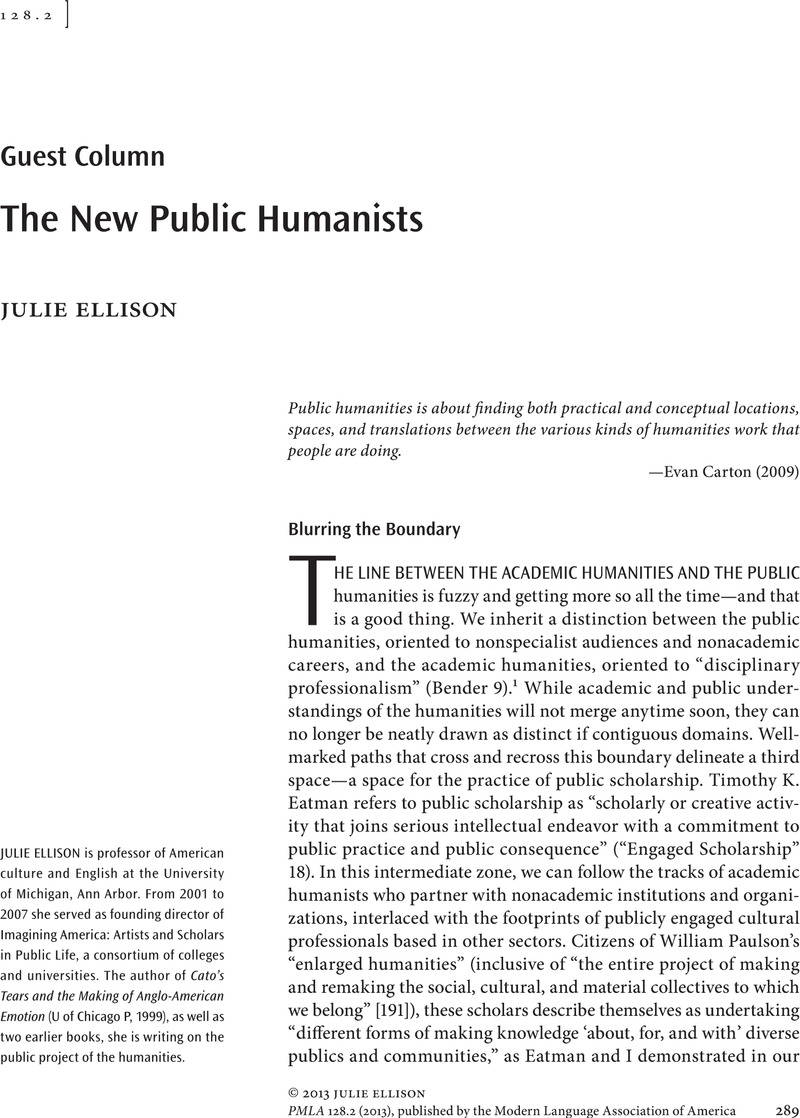Crossref Citations
This article has been cited by the following publications. This list is generated based on data provided by Crossref.
Heiland, Donna
and
Huber, Mary Taylor
2015.
Building capacity for civic learning and engagement: An emerging infrastructure in the academic arts and humanities in the United States.
Arts and Humanities in Higher Education,
Vol. 14,
Issue. 3,
p.
260.
Mullen, Mary L.
2016.
Public Humanities' (Victorian) Culture Problem.
Cultural Studies,
Vol. 30,
Issue. 2,
p.
183.
Branson, Tyler S.
and
Robbins, Sarah R.
2017.
The Cambridge Handbook of Service Learning and Community Engagement.
p.
244.
Holzman, Laura M.
2021.
Socially Engaged Art History and Beyond.
p.
33.
Hiro, Molly
and
McDaneld, Jen
2022.
Humanities at the centre: Insights from building a public humanities program.
Arts and Humanities in Higher Education,
Vol. 21,
Issue. 4,
p.
323.



